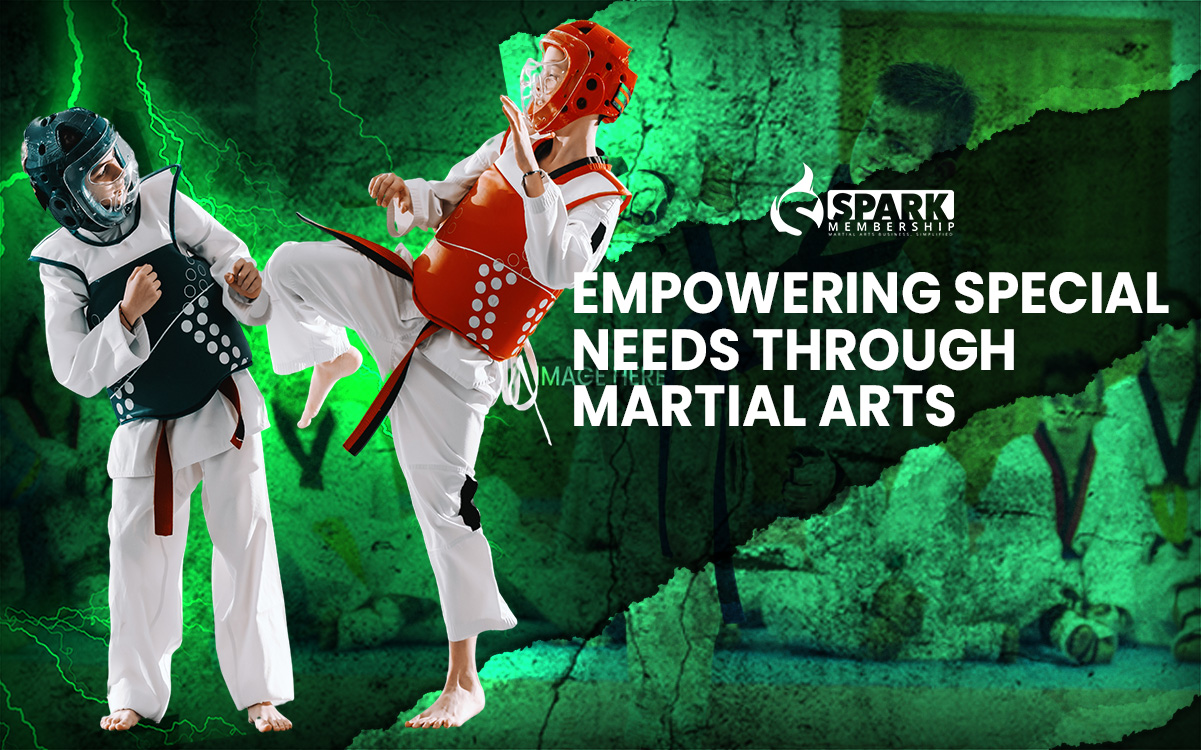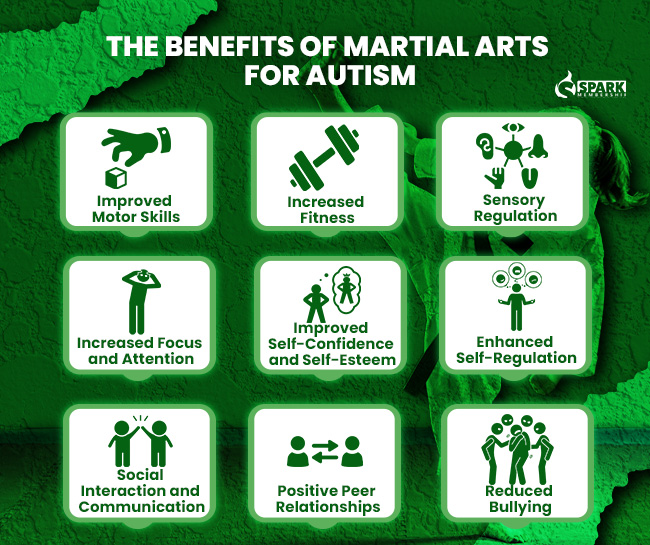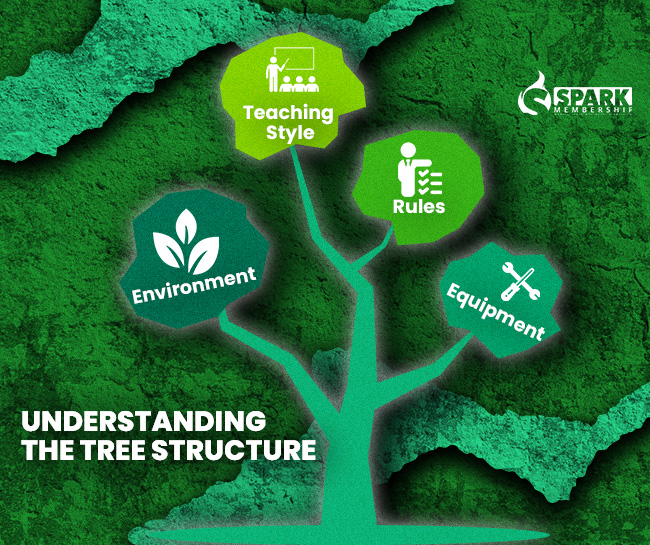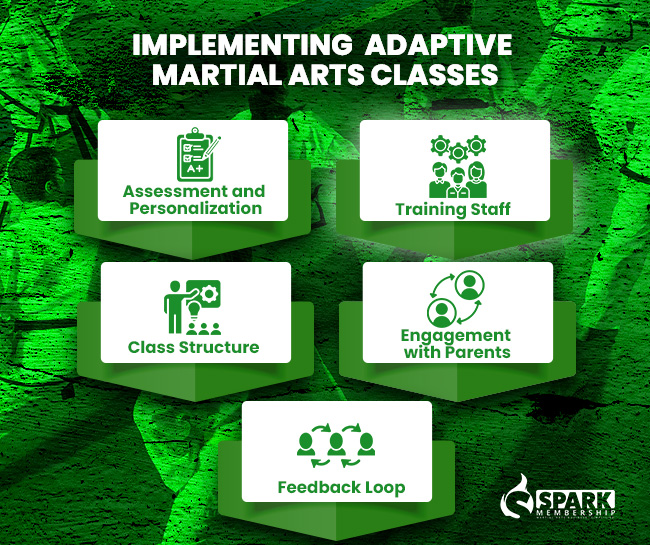
Are you staring at a signup sheet, noticing a student with special needs and wondering, “What’s next?” If the thought of adapting your martial arts class feels like uncharted territory, you’re not alone. Many instructors are eager to welcome everyone but find themselves at a crossroads, unsure of how to proceed.
This guide is here to help you out. We’re going to show you how to make your school a place where every kid, including those with autism, feels included and happy. Let’s work together to make your martial arts class a fun and friendly spot for all kids.
The Benefits of Martial Arts for Autism

Martial arts can be a powerful tool for kids with autism, offering more than just physical benefits. It’s about building skills that can help in daily life, too. Here’s how practicing martial arts can make a big difference:
Improved Motor Skills: Martial arts require precise movements that improve coordination and agility, helping children fine-tune their motor skills.
Increased Fitness: Regular practice boosts overall fitness, including strength, flexibility, and endurance, contributing to a healthier lifestyle.
Sensory Regulation: The structured environment of martial arts can help children better process sensory information, reducing overwhelm and aiding in calmness.
Increased Focus and Attention: The discipline of martial arts encourages children to concentrate on tasks, enhancing their ability to focus and pay attention for longer periods.
Improved Self-Confidence and Self-Esteem: Achieving new levels and mastering techniques boosts confidence and fosters a positive self-image.
Enhanced Self-Regulation: Learning to control movements and emotions in class can improve self-regulation skills in other areas of life.
Social Interaction and Communication: Classes provide a social setting for practicing communication skills and understanding social cues in a supportive environment.
Positive Peer Relationships: Working together and respecting each other in class helps build friendships and improve social interactions.
Reduced Bullying: Martial arts teach self-defense skills and confidence, which can help deter bullying and empower children to stand up for themselves.
💡 Offering programs tailored to special needs not only serves the community but also enhances the school’s reputation, attracts diverse clientele, and fosters a supportive and inclusive environment.
Understanding the TREE Structure

The TREE structure stands for Teaching style, Rules, Environment, and Equipment. It’s a flexible framework designed to adapt martial arts training to the needs of children with autism.
Teaching Style:
Instructors are encouraged to use clear, concise instructions and to demonstrate techniques slowly, breaking down movements into manageable steps. Visual aids and consistent routines can also be beneficial.
Rules:
Clear, simple rules are essential. They provide a sense of structure and predictability, helping to reduce anxiety and improve focus.
Environment:
A sensory-friendly environment that minimizes distractions can significantly enhance learning. This might involve adjusting lighting, reducing noise, or incorporating sensory breaks into the class structure.
Equipment:
Using the right equipment is crucial. For example, softer mats and protective gear can make training safer and more comfortable, encouraging participation.
💡 Implementing the TREE structure can attract and retain students with special needs, enriching their community and reputation.
Implementing Adaptive Martial Arts Classes

Creating an inclusive martial arts class requires thoughtful planning and a commitment to understanding the unique needs of each student. Here’s a step-by-step guide:
- Assessment and Personalization: Begin by assessing the needs of each child. This might involve discussions with parents and caregivers to understand individual challenges and preferences.
- Training Staff: Ensure that all instructors and staff members are trained in the TREE structure and understand autism’s nuances. Empathy, patience, and flexibility are key qualities.
- Class Structure: Design classes that incorporate the TREE principles. This might mean smaller class sizes, individualized attention, and the incorporation of visual schedules to outline the session’s activities.
- Engagement with Parents: Keep an open line of communication with parents. Their insights can be invaluable in tailoring the program to better suit their child’s needs.
- Feedback Loop: Establish a feedback mechanism to continually refine and adjust the program. This includes soliciting feedback from parents, children, and instructors.
So, there you have it. Martial arts isn’t just about learning how to kick and punch. It’s a great way for kids with autism to gain skills that help them in everyday life. From feeling stronger and more in control of their bodies to making friends and feeling good about themselves, martial arts offers a lot. We hope this guide inspires martial arts schools and parents to give these classes a try. Let’s make our classes a place where every kid gets to shine and feel proud of what they can do.
Ready to make your martial arts school a place where every kid can shine? Dive deeper into creating inclusive classes by reading our blog on “How to Attract Kids to a Karate School.” Plus, optimize your management with Spark Membership software tailored for martial arts schools. Let’s empower every child, including those with special needs, to thrive in martial arts.




